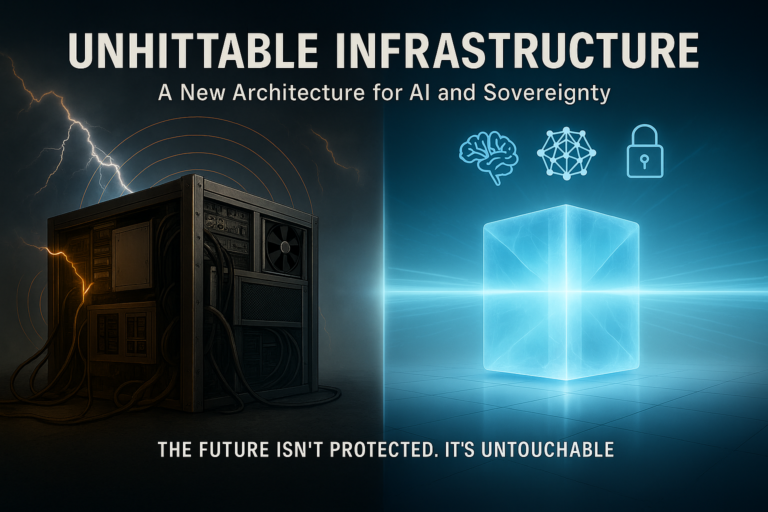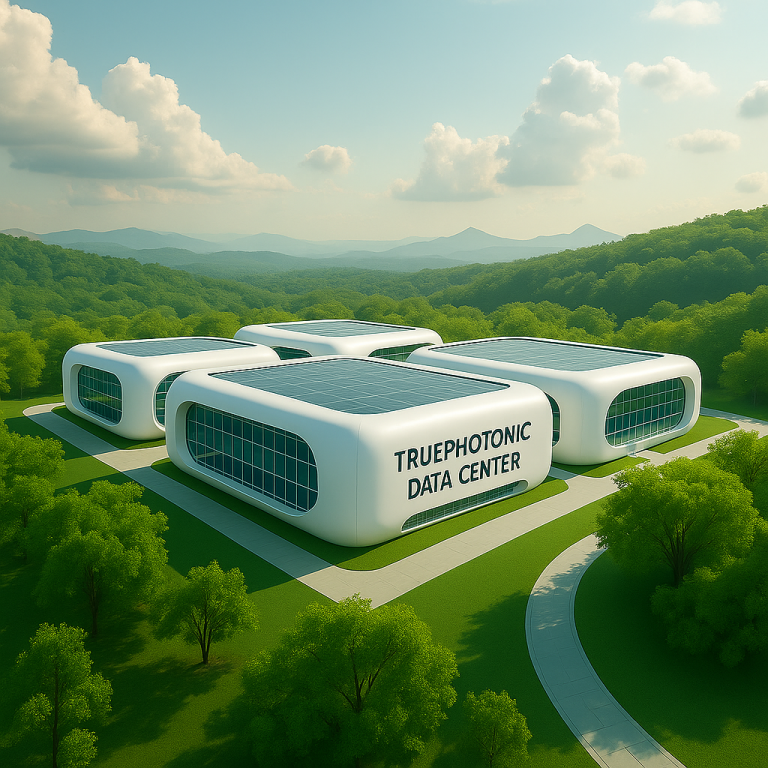May 2025 | Editorial Team at True Photonic
As world leaders, CEOs, and technologists gather this week in Riyadh to discuss the future of artificial intelligence, much of the conversation will center around a now-familiar binary: the U.S. leads in research, China leads in scale. It is a narrative that is growing increasingly uncomfortable for American policymakers—because in energy, manufacturing, and applied AI, China is no longer catching up. It’s pulling ahead.
But what if the answer isn’t to scale what already exists, faster and cheaper?
What if the answer is to build an entirely different foundation—one that renders today’s metrics irrelevant?
At True Photonic, we believe America’s best path forward is not to out-manufacture China in silicon, but to transcend silicon altogether—and redefine infrastructure at the level of physics.
When the System Is the Limitation
AI is devouring energy, straining grids, and making compute a new strategic commodity.
Even the most advanced silicon chips are nearing their physical limits—of heat, power, and interconnect.
We’re responding not by optimizing the system, but by replacing it.
At the core of our platform is the Poovey Switch™, the world’s first commercial-grade, light-actuated transistor. Combined with our stack of all-optical logic gates, photonic interconnects, and light-based memory coordination, this architecture allows us to process, store, and transmit information entirely in photons.
There is no heat to dissipate.
No rare earths to mine.
No grid to overload.
No chip to shield.
America Doesn’t Need a Moat. It Needs a Medium.
Wolfgang Münchau is right that America’s edge in open-source models is eroding.
But the answer isn’t secrecy or scale. It’s sovereignty of the stack.
Photonic compute offers:
- Femtosecond processing speeds
- 90% less energy consumption
- Zero heat and water requirements
- Offline and orbital deployment
- And complete freedom from chip fabs and hostile supply chains
In an arms race of intelligence, we don’t need to out-produce China in wafers.
We need to build an uncopyable compute infrastructure—a system not dependent on the same materials, economics, or geopolitical vulnerabilities.
That’s what a post-silicon industrial base looks like.
And we’re building it now.
A New Architecture for the New Alliances
The conversation in Riyadh—and increasingly in Brussels and Washington—is about securing energy and scaling compute.
But we need to think bigger.
Photonic systems make it possible to create **AI infrastructure that is:
- Sovereign
- Portable
- Infinitely replicable
- And monetizable as a clean, global export**
This is compute as infrastructure-as-a-service, where the U.S. controls the core, and our partners access light-speed capacity through secure, tokenized compute credits—no chips shipped, no sovereignty compromised.
We don’t need to build more plants.
We can build a photonic terminal—and make America the exporter of cognition, not just computation.
The Return of American Manufacturing—Just Not As You Know It
China’s advantage is speed and scale in old-world manufacturing.
True Photonic offers a way for America to redefine manufacturing itself.
We don’t need to rebuild the Rust Belt.
We need to build clean rooms that beam logic, not solder it.
Photonic infrastructure can be deployed in energy-constrained regions, on microgrids, or even in orbit.
And it runs securely, because light carries no charge, and no electromagnetic footprint.
It is un-hackable by voltage, and unbreakable by heat.
This isn’t “Industry 4.0.”
It’s something new.
We call it Civilization Infrastructure.
This Isn’t a Pivot. It’s a Leap.
The West doesn’t need to react faster.
It needs to build differently.
The U.S. can lead again—not by trying to match China dam-for-dam or wafer-for-wafer—but by investing in compute that doesn’t break, logic that doesn’t burn, and infrastructure that scales in light, not electricity.
That’s not an AI play.
That’s a national play.
And it’s how we win this century—not in megawatts, but in mediums.




